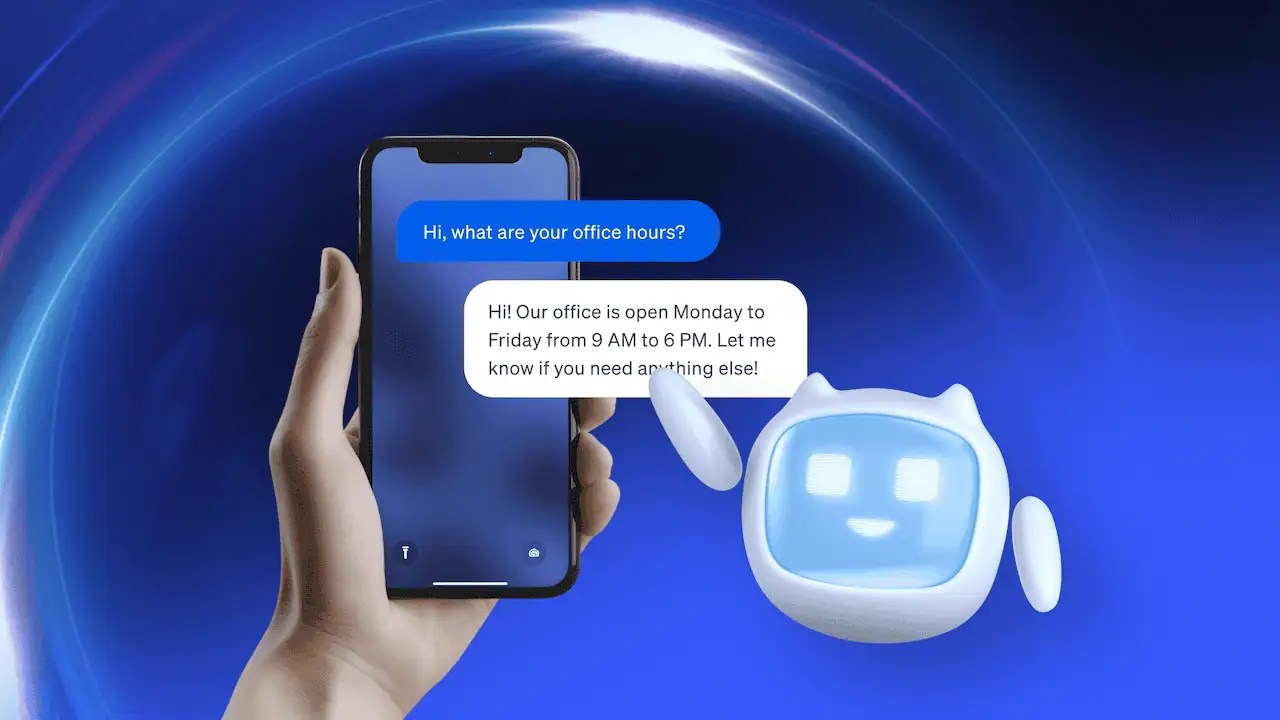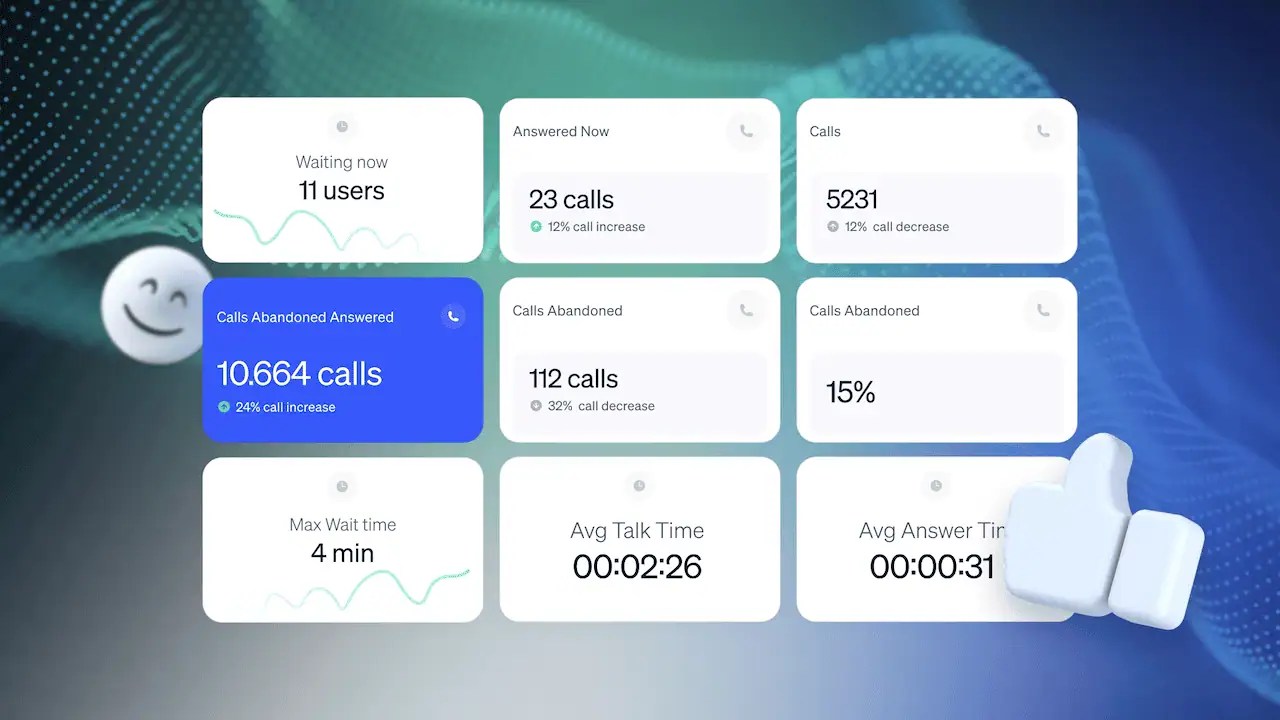Most of your business hinges on excellent customer service. Negative interactions can damage your reputation, while great service builds loyalty and fuels growth.
Investing in customer service helps grow and strengthen your customer base through positive word of mouth. But how exactly do you make your customer service better?
This article outlines 17 key tips to take your customer service from good to great.
Whether you need help responding to poor reviews, reducing churn, or improving customer loyalty, you’ll find best practices for strengthening customer bonds and delivering a standout customer experience.
17 Customer Service Tips To Get You Started
Delivering great customer service improves the bottom line through better customer retention and referrals. Here are a few tips to get you started on the journey.
1. Show empathy
Putting yourself in the customer’s shoes and seeing things from their perspective forge strong relationships and create happy, loyal customers.
However, many customer service reps struggle with displaying empathy.
We’ve all dealt with service people who mechanically read scripts, bounce us between departments, force us to repeat information multiple times, fail to accept responsibility for mistakes, and never bother to apologize.
When customers feel frustrated, unimportant, and eager to take their business elsewhere.

So, how can you cultivate an empathetic mindset within your team? While inherent empathy can’t necessarily be “taught,” you can implement strategies to help support reps sympathize better with customers.
Discuss concrete examples of customer problems and issues and how to help them navigate them. Role-playing exercises can also help reps practice putting themselves in the customer’s place and responding appropriately to issues like credit card disputes or billing questions.
Creating a workplace culture that values compassion is key. Don’t punish employees for spending more time reassuring upset customers. Make them learn to lead through their empathetic engagement.
2. Use positive language
It’s all about how you phrase your language. Even if you deliver bad news, there’s a way to present it to customers.
If you’re levelheaded and serious, they will calm down as well. The key is always having a constructive tone and providing helpful solutions whenever possible.
For example, consider when a customer enters the store looking for an out-of-stock item.
Sometimes, they become frustrated or even irate when they find out that you don’t have what they need. Rather than bluntly saying, “Sorry, we don’t have that part/product right now,” turn it into a productive interaction.
First, empathize with their situation. Say something like, “I understand you were hoping to purchase this today and I apologize that we currently have none in stock.”
Then, immediately provide a solution to show you want to rectify the situation. You could say, “A new shipment is scheduled to arrive next Tuesday if you want to come back then. I’d be happy to hold one for you once they come in or I can give you a call to let you know when they’ve arrived.”
Do you see the difference between those two responses? The first is dismissive, lacks empathy, and doesn’t offer any solution.
But the second response is informative, constructive, confident, and proactive. It demonstrates that you want to help the customer rather than brush them off.
That understanding and problem-solving approach is invaluable for defusing tense situations and keeping customers happy.
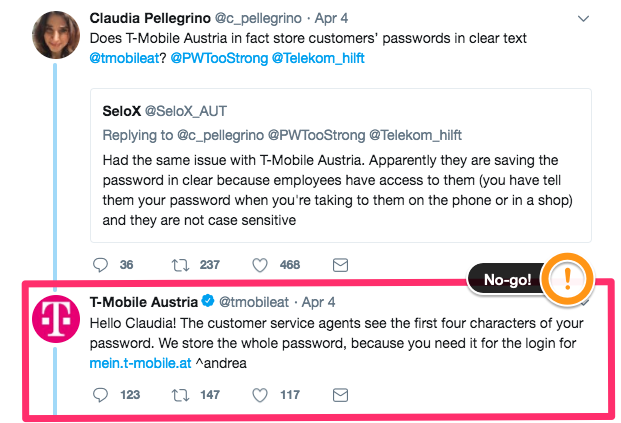
3. Communicate clearly
Clear communication builds trust and rapport vital for any customer relationship.
However, unclear or confusing messages can frustrate customers and damage the relationship.
Many customer service agents struggle with communication for various reasons. Some rely too heavily on scripts filled with complex jargon rather than speaking conversationally.
Others mumble or speak too quickly for customers to follow. Some fail to listen closely to fully understand customer issues before responding.
To promote clear communication within your support team, evaluate any pre-written responses to ensure the language is simple and easy to grasp. Reps should also be coached on speaking clearly and avoiding overly complex vocabulary when interacting with customers.
Additionally, implement active listening training. Teach employees how to focus intently on understanding all details of an issue before formulating a response. This prevents unclear or irrelevant replies that confuse customers.
4. Know your product & services
When agents have command of product features, pricing, options, and policies, they can confidently guide customers to the best choices for their needs. However, gaps in understanding around your catalog can undermine the customer experience.
To ensure your customer service team has expert product and service knowledge, audit your current training program to pinpoint any content gaps. Ensure all offerings are covered in depth, including options and policies for each. Then, quiz reps to confirm comprehension.
Also, ongoing training updates should be implemented as new products and promotions are introduced.
Don’t just announce changes via email and expect representatives to integrate details independently. Dedicate time to train every agent personally on revisions to maintain uniformly high knowledge levels.
Monitor customer interactions for indicators around gaps in understanding. If certain products generate a high rate of confusion or questions, revisit training for those items with the broader team.
Having super users who specialize in complicated offerings can also help drive product mastery over time.
5. Focus on first-call resolution
Providing complete, permanent resolutions within a customer’s first service interaction increases customer satisfaction and a positive brand impression.
However, unresolved inquiries that bounce between departments erode confidence and loyalty. Reps typically specialize in a single area and funnel overflow problems elsewhere. This fragmentation inevitably leads to customer frustration.
To bring more comprehensive issue resolution into initial interactions, train your front-line agents and equip them with the right resources to solve various high-frequency questions.
Implement better documentation and knowledge sharing across teams. Create an easily searchable database where agents can access details on specialty topics handled elsewhere to address more facets of customer problems.

Regularly sampling and scoring customer interactions also helps gauge first-call resolution rates. Additional coaching and cross-training for low scorers to expand their capabilities will help unify service channels over time.
6. Set the right expectations
Managing expectations upfront prevents disappointment. Many reps overpromise — whether timeline, availability, or resolution — to appease initially. But mismatched expectations guarantee future complaints.
Common issues include service level agreements exceeding realities. Audit standards versus actuals.
Train reps on tactful transparency about probabilities, wait times, and options. Frame delivery in days or weeks, not vague platitudes.
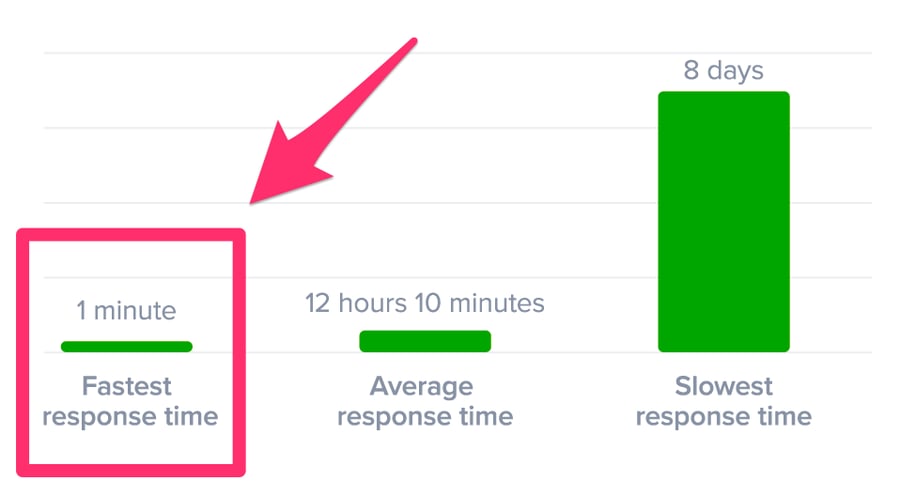
Delivering hard news is challenging. But it pays dividends in trust and satisfaction long-term. Guide reps to set expectations that align with current realities. Candor may sting initially but fosters loyalty overall.
7. Personalize the customer experience
A personal touch is the best way to let your prospects know they are a priority. A little personalization goes a long way in providing an exceptional first impression.

“The golden rule for every business — put yourself in your customer’s place!”
Orison Swett Marden
When you talk to a customer, remember their name and use it throughout the conversation. To show that you’re listening, mention something they said earlier. Your regulars will appreciate this personalization.
Your customer has a busy life, just like you do. Keep that in mind, especially when you’re initiating contact with unhappy customers. Rushing through a conversation or not allowing the customer any control shows you don’t value their time.
Using your customer’s names and giving them options makes them feel valued. Additional ways to personalize include:
- Remember details about prior conversations and refer back to show you listen
- Offer flexible solutions tailored to their needs
- Follow up afterward to ensure satisfaction
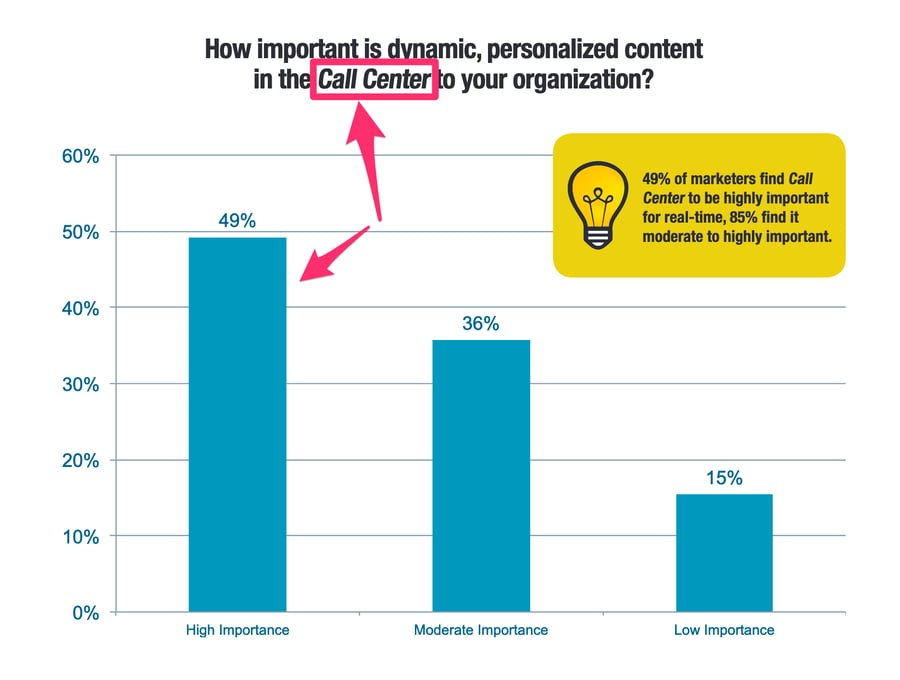
A little personalization goes a long way in providing an exceptional customer experience. Your customers will remember how you made them feel and reward you with repeat business and referrals.
8. Anticipate customer needs
Pay attention to cues from the customer to anticipate what questions or concerns they might have.
There are a few key ways support reps can get better at anticipating customer needs.
First, they should thoroughly research and understand the company’s products, services, policies, and common issues. The more insight and know-how they have, the better they’ll be able to put themselves in the customer’s shoes.
Second, employees should look for cues from the customer about what matters most to them and what questions they might ask next. Tone, word choice, and body language can help representatives predict what’s important.
Pattern recognition plays a key role — noticing what needs arise commonly can clue reps into what to explain or offer before the customer even asks.
With practice and experience, anticipation gets easier.
Related: How To Nail Customer Experience Personalization & Why It Matters
9. Don’t wait for customers to cancel
You must be two steps ahead of your customers, especially for subscription or service businesses. When a customer speaks with a retention agent in your call center, it’s almost too late to retain them.
Instead, successful organizations use customer engagement data to eliminate customer churn risks. This function is known as proactive customer retention. If a company can extend the time customers stay on the books, it can easily turn from cash-flow positive to truly profitable.
Customer support teams, customer success managers, and product managers are the key stakeholders in such efforts. These teams usually scour Voice of Customer (VoC) data to identify costly gaps in the customer experience. Then, they craft thoughtful, proactive customer care campaigns to mitigate future causes of churn.
Most customer service tips focus on responding to customer needs, but this one is all about anticipating them and providing helpful solutions to get the most value and benefit from your service.
10. Go the extra mile
Going the extra mile for customers often separates good customer service from great customer service.
Things like following up on an issue even after the case is closed, brainstorming creative solutions when there’s no obvious solution available, giving a sincere apology for difficulties caused even if they were unavoidable, or providing extensive additional information and training resources beyond what was asked for can all show the customer that the company cares.
Empowering representatives with the flexibility and authority to make these judgment calls can strengthen relationships and improve customer retention when appropriate.
Of course, context and reasonableness matter here. Following up repeatedly when a customer hasn’t responded or drastically overcompensating for minor issues can have diminishing returns.
However, within reason, choosing to provide more than what’s strictly required often reminds customers that there are humans behind the company who value them. The gesture sticks in people’s memories and is associated with positive feelings toward the brand.
Related: Customer Intelligence: What It Is & How to Implement It
11. Keep a positive attitude
A pleasant demeanor demonstrates professionalism and keeps conversations constructive even when dealing with upset, frustrated, or bad customers.
Taking a few deep calming breaths when feeling one’s mood slip can work wonders. Having empathy that people are often not upset with the representative personally but rather the situation also helps not take negativity too personally.
Remembering that all customers deserve good service regardless of their current attitude is key too. You need to focus on things within one’s control (like tone of voice, word choice, and actively listening) is empowering.
For example, when a Dark Horse Espresso customer tweeted about their electrical outlets.

They didn’t take it well

When customer service teams use techniques to self-regulate their mindsets, they become better equipped to spread positivity to others during even the toughest calls.
After all, a sunny, enthusiastic persona can be contagious. Approaching customer interactions with optimism and grace under fire drives greater client satisfaction and loyalty overall for the company despite the inevitability of some difficult conversations.
Keeping one’s chin up is a skill that can brighten customers’ days and enhance a company’s image.
12. Seek customer feedback
Actively seeking feedback from customers provides valuable insights for reps and companies to improve their products and level of service.
By surveying customers, monitoring reviews, directly asking for feedback during or after interactions, analyzing complaints data, and incentivizing participation, companies can better understand customers’ preferences, frustrations, and suggestions.
Actively seeking feedback from customers on social media also provides valuable insights for representatives and companies to improve their products and level of service.
They can then tweak approaches, solve common problems proactively, and prioritize upgrades accordingly. Customers appreciate being heard too and providing feedback makes them feel valued. This ultimately drives higher satisfaction.
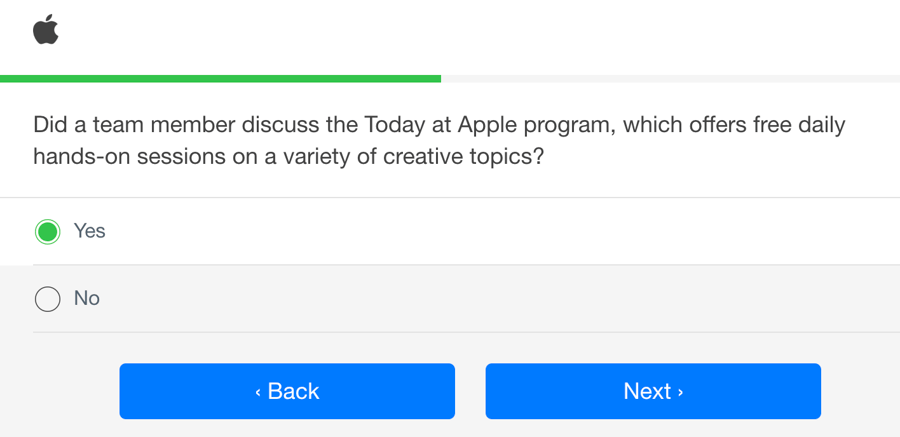
13. Learn continuously
Continually educate your team on the company’s latest offerings, policies, systems, and procedures.
As customer needs evolve and preferences change, reps also need to devote time to expanding their skill sets, including communication tactics, conflict resolution, emotional intelligence, and problem-solving abilities.
Managers can support continual learning by providing coaching and opportunities for skills training while emphasizing a culture focused on a growth mindset.
When customers interact with an ever-developing team open to improvement, it leads to better experiences and brand impressions over time through consistently stellar service.
14. Celebrate successes
Recognizing that customer service representatives win and delight customers creates positive reinforcement and motivational reminders that excellent service is achievable and worthwhile.
Sharing testimonials from pleased clients, recognizing employees who go above and beyond, and tracking metrics like customer retention demonstrates the business impact of providing great support.
Tapping into related feelings of teamwork pride through celebrations of perfect survey scores or hitting key targets promotes both morale and continued motivation to aim high when interacting with customers moving forward — keeping spirits and dedication high across the team.
And a thank you note to your customers never hurts.

15. Invest in customer service skills
Most managers actively look for customer service skills before they hire. However, ongoing customer service training falls on the rep as much as it does on the company.
While some companies have robust training programs, others expect representatives to take the initiative in developing their skills.
Without continual learning, representatives will fall behind competitors who sharpen their abilities.
Some areas where representatives should focus ongoing training include:
- Communication skills — Taking advanced courses in listening, questioning techniques, explaining complex topics simply, and speaking clearly. These “soft skills” influence customer satisfaction.
- Product/service knowledge — Reading trade publications, reviewing manuals, and studying releases to keep information current. Customers expect accurate expertise.
- Handling difficult situations — Practicing responses through role-playing exercises prepares representatives for stressful interactions. Smart responses lead to better resolutions.
- Technology proficiency — Learning new software, apps, and company systems expands service options for customers. Smooth technology usage also builds confidence.
Related: Mastering CX Success: Your Guide to Teaming and Goal Setting
16. Embrace technology
Use tools and platforms that allow your customer support team to improve response times and best serve modern customers. For example, many customers now prefer self-service options like web chatbots for quick inquiries rather than face-to-face interactions.
Getting fully comfortable with the company’s key systems for pulling customer data empowers faster service. Digital tools like support ticket programs, cloud phone systems with screen pop software, or file-sharing platforms help keep interactions productive.

Equipping help desk chatbots to handle common requests frees up human agents for more complex issues.
Data analysis through artificial intelligence also gives companies key insights into emerging customer needs. When technology takes over repetitive tasks, representatives can instead focus on relationship building.
Resources like online knowledge bases and FAQs reduce research time for common questions.
But don’t over-rely on automatons. Use them where needed and when necessary.
Here’s an excellent example of why your chatbots might not always work. It’s cases like these when you need a secondary option for your customers to get in touch.

Most chatbots today don’t have this escalation protocol, according to UX Collective. You need the right balance of automation and human touch to function better.
17. Track your customer service performance
It’s important to try and measure customer service metrics that matter most to your team. Tracking too many metrics can lead to data overload without enough time to analyze the data and make meaningful adjustments.
Rather than focusing solely on individual metrics, look at the big picture. Let your organizational goals and customer needs guide which metrics you track.
Some key metrics to consider tracking include:
- Net Promoter Score: This measures customer satisfaction and likelihood to recommend your company. It provides a high-level view of customer loyalty.
- Customer Satisfaction Scores: These track how satisfied customers are with their overall experience and key touchpoints. This indicates where improvements may be needed.
- New Upsells/Cross-sells: Measuring additional sales to existing customers shows how well your team converts opportunities.
- Customer Churn: Keeping churn rates low ensures customers stick around. Tracking this over time shows if satisfaction is declining.

You may want to track resolution time, first contact resolution, CSAT by agent, onboarding completion rate, and other metrics relevant to your customer service operations.
Don’t forget to analyze trends over time and leverage insights to improve your customer experience.
Related: 14 Customer Experience Best Practices to Master CX
You’ve Just Scratched the Tip of the Iceberg
Providing excellent customer service is no small feat. It requires cultivating skills and mindsets that often take years to fully develop.
Though you may feel you’re already doing a good job in this area, you’ve only scratched the surface of your customer service potential. Companies that depend on loyal customers use unified customer experience management software to track customer sentiment and employee engagement. With it, everyone can be on the same page.
Unified-CXM platforms like Nextiva help companies focus on the customer, respond quickly, and handle problems with the highest level of care. They can help you offer a service that makes people feel valued. Following these customer service tips will help set your business apart.

















 Customer Experience
Customer Experience 













